A horse will struggle to take an even contact, for instance, if he isn’t straight. He will also struggle to develop impulsion if he is going crooked. So, straightness is a crucial element in Dressage and it can be worked on from fairly early on in the horse’s training. Here are some ways that you can address the straightness in the canter and work on improving it. The difference in a horse’s strength, balance, and coordination on one side is much like us being left or right handed.
However, through systematic training you can develop equal strength and suppleness on both sides of the body which allows the horse to travel straight and the aids to be applied evenly.
Developing the ability for a horse to carry himself evenly and straight also reduces uneven wear and tear on the joints, muscles, and ligaments, so can contribute to a horse who is sound and happy for a longer time. In the canter, crookedness is often evident in a horse who swings his quarters in or out or who drifts or tilts.
- School the Counter Canter and Counter Flexion
One of the primary reasons for schooling the counter canter is its ability to develop straightness. There are also other benefits including balance and engagement, but if a horse is travelling crooked in true canter, the counter canter will show it up almost immediately.
In counter canter, the rider is able to influence the outside hind leg. While the horse is in counter canter, the outside leg has to step underneath more and carry more weight, and the half halts encourage him to equalise the level of weight that he carries on both legs, giving the horse the tools to properly align his body. When going through corners or on bends, the counter canter can help to stop the quarters from falling in or the shoulders from falling out.
An easy way to introduce the counter canter is by riding a shallow loop off the side of the arena. As you progress, this can be moved into a loop through X, and then to cantering across the diagonal without changing rein.
It’s a difficult movement for young horses to master, so be sure that the true canter is well established and that you are sitting correctly; your aids should be guided by the canter lead itself, not by the direction in which you are travelling.
Counter flexion is another useful tool in your arsenal of straightening weapons. While cantering right, for instance, try flexing the horse to the left before straightening up.
Often, this allows the horse to bring his front feet and shoulders more in line with his back end. Incorporating counter flexion into your work also helps to stretch the stiff side of the horse, so that they have the ability to travel more straight over time.
- Check Your Own Position
All too often, straightness issues are exacerbated by rider problems. As most of us are stronger on one side, we may find that we’re applying the aids unevenly and using a stronger right leg or hand, for instance. On top of that, many riders also sit crooked. This can mean a variety of different things, for instance:
Weighting one seatbone more than the other
Twisting your upper or lower body in one direction more than the other
Tilting your shoulders
This means that your horse may react differently on one rein to the other, or that you may be pushing his quarters in or out or tilting his neck and head inadvertently. It can be hard to tell if you’re riding truly straight though, because any correction can often feel strange and foreign!
Two of the best ways to identify any crookedness in your riding are a horse simulator and lunge lessons with an experienced person on the ground. In both scenarios, you can work on your own position and try to become more aware of what you’re doing.
- Riding Squares
Riding squares is an invaluable tool in all paces, and even if your horse is not ready for it in the canter as yet you can still get major benefits in walk and trot in improving your horse’s overall straightness.
When riding a square, it’s important to make sure that you make the turn a true right angle before going straight for a few strides and then turning another right angle.
Learning to do this accurately gives you control of the shoulder, which in turn allows you to position the shoulder underneath the horse and prevent falling outwards or inwards through the shoulder. This also helps the horse to lighten the forehand.
Remember, the turns should be ridden with the outside rein controlling the turn and the inside leg creating the bend, not by pulling on the inside rein. Using the inside rein to turn will in fact compound your straightness problem!
Original article: https://www.fei.org/stories/3-tips-develop-straightness-canter










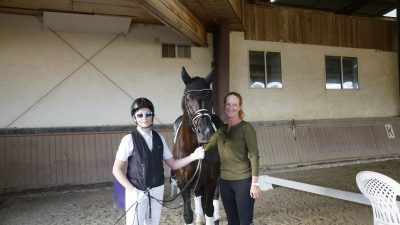
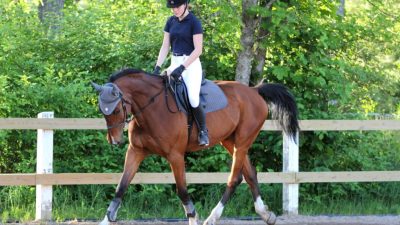









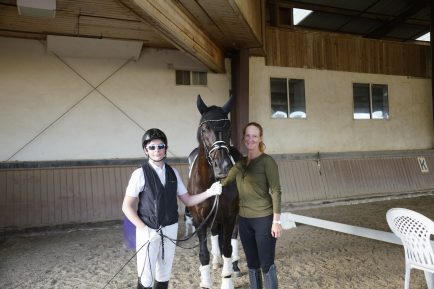
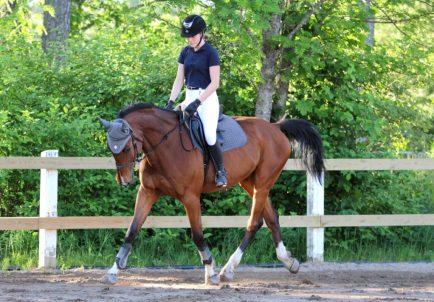
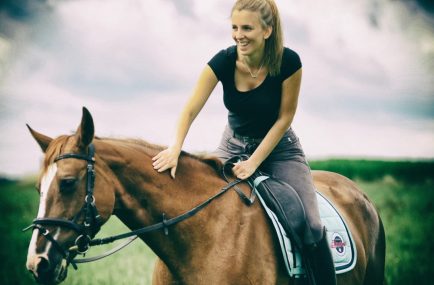
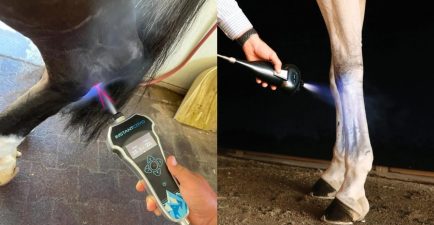
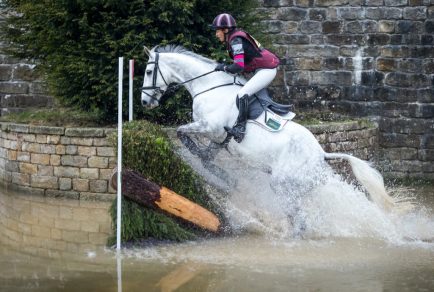
Comments